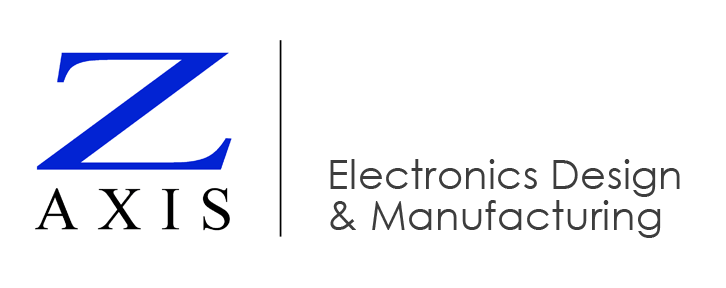Learn how Z-AXIS protects printed circuit board assemblies and lets you choose the best method for your application.
Printed circuit board assemblies, or PCBAs, are boards that are populated with electronic components. PCBAs usually need protection, but the type of protection that’s required varies by application.
That’s why at Z-AXIS, we offer customers a choice of PCBA protection methods.
In the video above, you’ll see how we can protect your PCBAs.
Metal or Plastic Enclosures
The most common way to protect PCBAs is by enclosing them in a metal or plastic box. Metal protects against EMI and ESD, but plastic weighs less and costs less. With enclosures, assembly is as easy as using a screwdriver. Applications include screens, displays and consumer products such as remote controls.
Potting or Encapsulation
Another way to protect PCBAs is by putting them inside a box and filling the enclosure with epoxy, or sometimes urethane. Potting, or encapsulation as it’s also known, provides mechanical benefits and helps cool hotter components. Applications include ruggedized power supplies.
Z-AXIS is skilled at mixing and dispensing epoxy, and we heat this encapsulant so that it flows readily and minimizes voids. Epoxy costs more than urethane, but epoxy can’t be scraped away – and you can’t see through it. So, it’s a good choice if you want to protect your designs from competitors or prevent unauthorized repairs.
Acrylic Conformal Coatings
Conformal coatings are another PCBA protection method that Z-AXIS offers. A robot coats the entire board with acrylic, but the plastic isn’t sprayed onto areas that would otherwise be masked. Masking is a labor-intensive process, so eliminating it saves time and money. At Z-AXIS, our robot’s nozzles can carefully spray around the edges of components or across a wider area.
Conformal coatings also speed cycle times while promoting environmental health and safety and easier PCBA inspections. Instead of exposing employees to solvents and then waiting for solvent-based coatings to dry, Z-AXIS runs PCBAs through a UV oven where curing happens in seconds.
The coatings that we use also contain a UV tracer that glows, or fluoresces, under near-UV light. This makes it easy for us to see if any coating is missing before the board goes into the oven. It’s also easier to inspect the board after UV oven curing is complete. Conformal coatings are used in automotive, aerospace, and industrial applications.
Parlene Coatings
Z-AXIS can also send your PCBAs out for parylene coating. It’s like conformal coating on steroids since the paralyene is powerful enough to fill even the smallest of gaps. Parlyene coating is expensive, but it’s a good choice when PCBAs will be exposed to the elements in mission-critical applications.
Moisture-Cure RTV Compound or UV-Cure Adhesive
Finally, Z-AXIS can protect PCBAs with either a moisture-cure RTV compound or a UV-cure adhesive. The RTV compound takes 24 hours to fully cure, but it’s less expensive than the UV-cure adhesive. Applications for both of these methods include boards with large components that need protection from vibrations.
Your Choice of PCBA Protection
There’s more than one way to protect printed circuit board assemblies, but Z-AXIS gives you a choice so that you can choose the best method for your application.
Contact us to learn more and to discuss your application.
